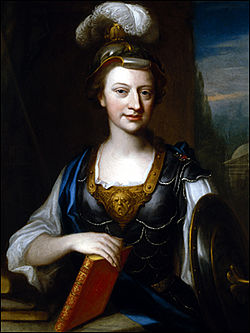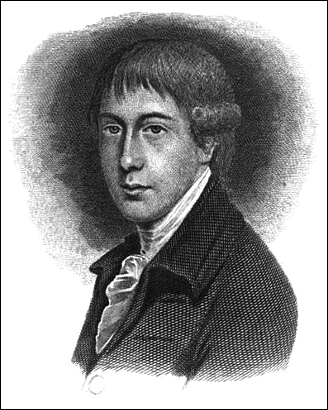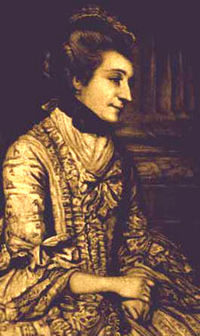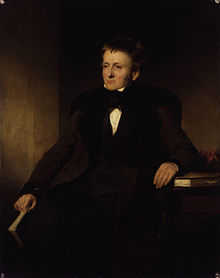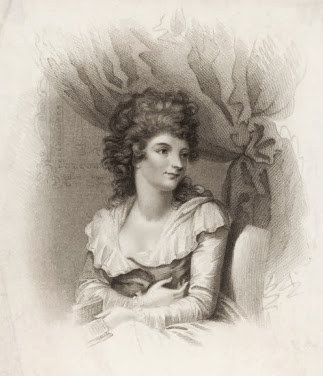Regency Personalities Series
In my attempts to provide us with the details of the Regency, today I continue with one of the many period notables.
Thomas Babington Macaulay 1st Baron Macaulay
25 October 1800 – 28 December 1859

Thomas Babington Macaulay
Macaulay was the eldest child of Zachary Macaulay, a Scottish Highlander, who became a colonial governor and abolitionist and Selena Mills who was a former pupil of Hannah More. Thomas Macaulay was born in Leicestershire, England, where he was noted as a child prodigy. As a toddler, gazing out of the window from his cot at the chimneys of a local factory, he is reputed to have asked his father whether the smoke came from the fires of hell.
He was educated at a private school in Hertfordshire and at Trinity College, Cambridge. Whilst at Cambridge he wrote much poetry and won several prizes, including the Chancellor’s Gold Medal in June 1821. In 1825 he published a prominent essay on Milton in the Edinburgh Review. He studied law and in 1826 he was called to the bar but showed more interest in a political than a legal career.
Macaulay, who never married and had no children, was once rumoured to have fallen for Maria Kinnaird, the wealthy ward of “Conversation” Sharp (who was a hat-maker, banker, merchant, poet, critic and British politician). But in fact, Macaulay’s strongest emotional ties were to his youngest sisters, Hannah and Margaret, who died while he was in India. As Hannah grew older, he formed the same close attachment to Hannah’s daughter Margaret, whom he called “Baba”.
Macaulay retained a passionate interest in classical literature throughout his life, and prided himself on his knowledge of Ancient Greek literature. While in India, he read every ancient Greek and Roman work that was available to him. In his letters, he describes reading the Aeneid whilst on vacation in Malvern in 1851, and being moved to tears by the beauty of Homer’s poetry. He also taught himself German, Dutch, and Spanish, and remained fluent in French.
In 1830 the Marquess of Lansdowne invited Macaulay to become Member of Parliament for the pocket borough of Calne. His maiden speech was in favour of abolishing the civil disabilities of the Jews in the UK.
Macaulay made his name with a series of speeches in favour of parliamentary reform. After the Great Reform Act of 1832 was passed, he became MP for Leeds. In the Reform, Calne’s representation was reduced from two to one; Leeds had never been represented before, but now had two members. Though proud to have helped pass the Reform Bill, Macaulay never ceased to be grateful to his former patron, Lansdowne, who remained a great friend and political ally.
Macaulay was Secretary to the Board of Control under Lord Grey from 1832 until 1833. After the passing of the Government of India Act 1833, he was appointed as the first Law Member of the Governor-General’s Council. He went to India in 1834, and served on the Supreme Council of India between 1834 and 1838.
Later on he introduced English-medium education in India through his famous Minute on Indian Education of February 1835. Macaulay called for an educational system to create a class of anglicised Indians who would serve as cultural intermediaries between the British and the Indians, and brought to an end a lively debate on the appropriate language for education and administration.
Macaulay thereby succeeded in implementing ideas previously put forward by Lord William Bentinck, the governor-general from 1829, who, inspired by utilitarian ideas and calling for “useful learning,” had favoured the replacement of Persian with English as the official language, the use of English as the medium of instruction, and the training of English-speaking Indians as teachers.
Macaulay convinced the Governor-General to adopt English as the medium of instruction in secondary education, from the sixth year of schooling onwards, rather than the Sanskrit or Persian then used in the institutions supported by the East India Company. Macaulay’s argued that Sanskrit and Arabic were wholly inadequate for students studying history, science and technology. Referring to the orientalists, he observed, “I have never found one amongst them who could deny that a single shelf of a good European library was worth the whole native literature of India and Arabia”. He argued, “We have to educate a people who cannot at present be educated by means of their mother-tongue. We must teach them some foreign language.” The solution was to teach English. His final years in India were devoted to the creation of a Penal Code, as the leading member of the Law Commission.
In the aftermath of the Indian Mutiny of 1857, Macaulay’s criminal law proposal was enacted. The Indian Penal Code in 1860 was followed by the Criminal Procedure Code in 1872 and the Civil Procedure Code in 1909. The Indian Penal Code inspired counterparts in most other British colonies, and to date many of these laws are still in effect in places as far apart as Pakistan, Singapore, Bangladesh, Sri Lanka, Nigeria and Zimbabwe, as well as in India itself.
In Indian culture, the term “Macaulay’s Children” is sometimes used to refer to people born of Indian ancestry who adopt Western culture as a lifestyle, or display attitudes influenced by colonisers (“Macaulayism”) – expressions used disparagingly, and with the implication of disloyalty to one’s country and one’s heritage.
Macaulay’s Minute formed the basis for the reforms introduced in the English Education Act of 1835. In 1836, a school named La Martinière, founded by Major General Claude Martin, had one of its houses named after him.
In independent India, Macaulay’s idea of the civilising mission has been used by Dalitists, in particular by neoliberalist Chandra Bhan Prasad, as a “creative appropriation for self-empowerment”, based on the view that Dalit folk are empowered by Macaulay’s deprecation of Hindu civilisation and an English education.
Returning to Britain in 1838, he became MP for Edinburgh. He was made Secretary at War in 1839 by Lord Melbourne and was sworn of the Privy Council the same year. In 1841 Macaulay addressed the issue of copyright law. Macaulay’s position, slightly modified, became the basis of copyright law in the English-speaking world for many decades. Macaulay argued that copyright is a monopoly and as such has generally negative effects on society. After the fall of Melbourne’s government in 1841 Macaulay devoted more time to literary work, and returned to office as Paymaster-General in 1846 in Lord John Russell’s administration.
In the election of 1847 he lost his seat in Edinburgh. He attributed the loss to the anger of religious zealots over his speech in favour of expanding the annual government grant to Maynooth College in Ireland, which trained young men for the Catholic priesthood; some observers also attributed his loss to his neglect of local issues. In 1849 he was elected Rector of the University of Glasgow, a position with no administrative duties, often awarded by the students to men of political or literary fame. He also received the freedom of the city.
In 1852, the voters of Edinburgh offered to re-elect him to Parliament. He accepted on the express condition that he need not campaign and would not pledge himself to a position on any political issue. Remarkably, he was elected on those terms. He seldom attended the House due to ill health. His weakness after suffering a heart attack caused him to postpone for several months making his speech of thanks to the Edinburgh voters. He resigned his seat in January 1856. In 1857 he was raised to the peerage as Baron Macaulay, of Rothley in the County of Leicester, but seldom attended the House of Lords.
Macaulay sat on the committee to decide on the historical subjects to be painted in the new Palace of Westminster. The need to collect reliable portraits of notable figures from history for this project led to the foundation of the National Portrait Gallery, which was formally established on 2 December 1856. Macaulay was amongst its founding trustees and is honoured with one of only three busts above the main entrance.
During his later years his health made work increasingly difficult for him. He died of a heart attack on 28 December 1859, aged 59, leaving his major work, The History of England from the Accession of James the Second incomplete. On 9 January 1860 he was buried in Westminster Abbey, in Poets’ Corner, near a statue of Addison. As he had no children, his peerage became extinct on his death.
Macaulay’s nephew, Sir George Trevelyan, Bt, wrote a best-selling “Life and Letters” of his famous uncle, which is still the best complete life of Macaulay. His great-nephew was the Cambridge historian G. M. Trevelyan.
Macaulay likely had an eidetic memory.
As a young man he composed the ballads Ivry and The Armada, which he later included as part of Lays of Ancient Rome, a series of very popular poems about heroic episodes in Roman history which he composed in India and published in 1842. The most famous of them, Horatius, concerns the heroism of Horatius Cocles. It contains the oft-quoted lines:
Then out spake brave Horatius,
The Captain of the Gate:
“To every man upon this earth
Death cometh soon or late.
And how can man die better
Than facing fearful odds,
For the ashes of his fathers,
And the temples of his gods?”
His essays, originally published in the Edinburgh Review, were collected as Critical and Historical Essays in 1843.
During the 1840s, Macaulay began work on his most famous work, The History of England from the Accession of James the Second, publishing the first two volumes in 1848. At first, he had planned to bring his history down to the reign of George III. After publication of his first two volumes, his hope was to complete his work with the death of Queen Anne in 1714.
The third and fourth volumes, bringing the history to the Peace of Ryswick, were published in 1855. At his death in 1859 he was working on the fifth volume. This, bringing the History down to the death of William III, was prepared for publication by his sister, Lady Trevelyan, after his death.
Macaulay’s political writings are famous for their ringing prose and for their confident, sometimes dogmatic, emphasis on a progressive model of British history, according to which the country threw off superstition, autocracy and confusion to create a balanced constitution and a forward-looking culture combined with freedom of belief and expression. This model of human progress has been called the Whig interpretation of history. This philosophy appears most clearly in the essays Macaulay wrote for the Edinburgh Review and other publications, which were collected in book form and a steady best-seller throughout the 19th century. But it is also reflected in History; the most stirring passages in the work are those that describe the “Glorious Revolution” of 1688.
Macaulay’s approach has been criticised by later historians for its one-sidedness and its complacency. Karl Marx referred to him as a ‘systematic falsifier of history’. His tendency to see history as a drama led him to treat figures whose views he opposed as if they were villains, while characters he approved of were presented as heroes. Macaulay goes to considerable length, for example, to absolve his main hero William III of any responsibility for the Glencoe massacre. Winston Churchill devoted a four volume biography of the Duke of Marlborough to rebutting Macaulay’s slights of his ancestor, expressing hope ‘to fasten the label “Liar” to his genteel coat-tails.’ On the other hand, this outlook, together with his obvious love of his subject matter and of English civilisation, helps to place the reader within the age being described in a personal way that no cold neutrality could, and Macaulay’s History is generally recognised as one of the masterpieces of historical writing and a magisterial literary triumph only comparable as such to Gibbon and Michelet.
Read Full Post »
